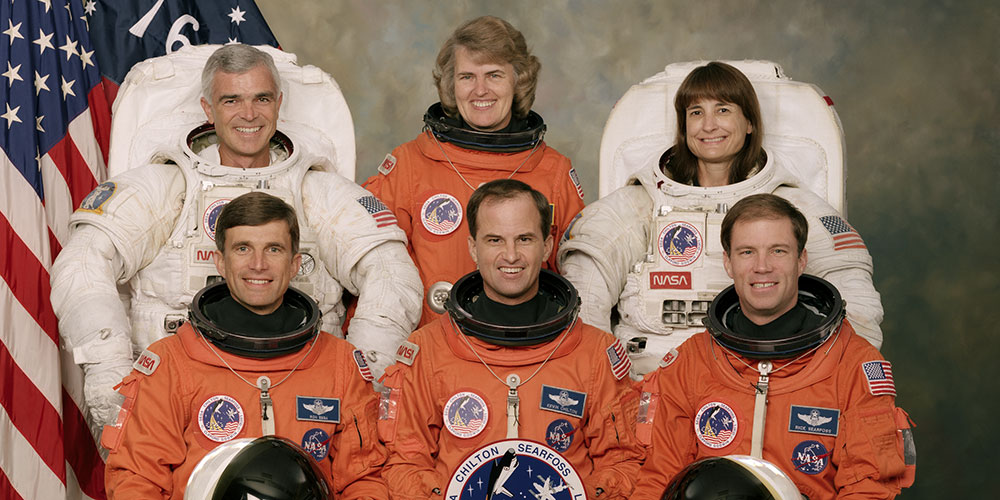
Seventeen days, 12 hours, 25 minutes.
That’s how long former NASA astronaut Ron Sega, professor and director of CSU’s Systems Engineering Program, was in space.
In October, Gov. John W. Hickenlooper will formally welcome Sega into the Colorado Space Heroes Hall of Fame, in recognition of his work as a NASA astronaut; as director of Systems Engineering at Colorado State University; as director of research engineering at the Department of Defense; and for his leadership in the U.S. Air Force Reserve as a retired Major General.
“The establishment of the Colorado Space Heroes Hall of Fame speaks highly of what Colorado has done for space. Personally, I’m really honored and humbled to be a part of that group,” Sega said.
Early in his career, Sega caught the bug of the much-hyped early space programs, and was encouraged to study science and math. With a bachelor’s degree in mathematics and physics, a master’s degree in physics, and a doctorate in electrical engineering, he had the necessary technical background to be considered by NASA.
Despite his interest in the program, he did not apply for admission to the NASA astronaut program until the late 1980s, after establishing a career grounded firmly in the principles of science, math, and engineering. He was selected from his first application.
Teamwork in space
Sega joined the NASA Astronaut Corps in 1990, where he went through a year-long training program, officially becoming an astronaut in 1991. His first space flight, STS-60, was also the first joint U.S./Russian Space Shuttle mission. The goal of the mission was to deploy the Wake Shield Facility (WSF), an experimental science platform. Despite some hardware issues, WSF was successfully deployed at the end of the space shuttle Discovery’s robotic arm.
“Teamwork was incredibly important in this situation, and helped make the mission successful,” Sega said. He uses this mission as an example in the Foundations of Systems Engineering (ENGR 501) course he teaches to illustrate the importance of systems engineering to real-world applications, but also to stress the importance of collaboration.
In addition to the WSF mission, Sega was part of STS-76, the third docking mission to the Russian space station Mir. Also, while he served as NASA Director of Operations in Star City, Russia, Sega became the first American to train in the Russian EVA suit in their underwater facility, the Hydrolab.
Systems engineering at CSU
Sega has spent time as a pilot, a professor, a director at the Department of Defense, as Under Secretary of the Air Force, and an astronaut, among other things. In all, there is one common thread: systems engineering. Sega, who joined the CSU faculty in 2007, is passionate about promoting systems engineering as a guiding set of principles for all engineering disciplines.
“Systems engineering fits really well with CSU’s land-grant mission, as it’s the basis of solving practical, complex systems, engaging with economic development, and supporting national security efforts,” he said.
The Systems Engineering Program is beginning its ninth year, and Sega will again be teaching the Foundations of Systems Engineering course during the fall semester. The program is designed for professionals to help meet industry and government needs for systems engineers, and it offers flexible delivery and degree options.